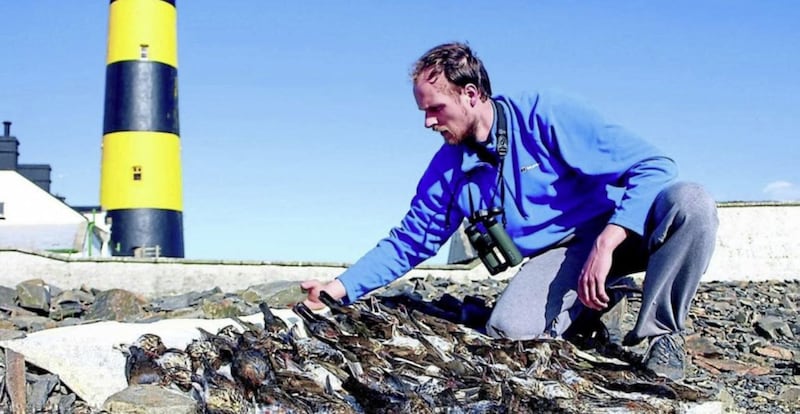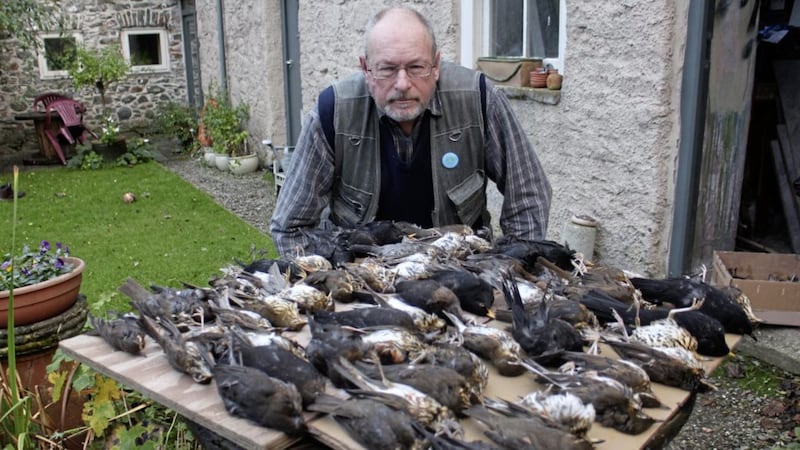HUNDREDS of migrating birds have perished at a Co Down lighthouse after becoming disorientated in thick fog.
Scores of blackbirds, song thrushes and redwings are among the birds that are believed to have died from exhaustion at St John's Point, near Killough over Saturday and Sunday night.
Similar carnage occurred at the same spot in the spring of 2014 when up to 100 redwing, jack-snipe, blackbird and fieldfare died.
The phenomenon known as 'lighthouse attraction' sees migratory birds flying at night drawn to tall buildings with lights, in the same manner moths and other insects become mesmerised.
The birds that died at the weekend are thought to have been fresh arrivals from Scandinavia and eastern Europe.
Their plight has prompted calls for the powerful lighthouse beam to be turned off when there is a danger dozens of birds could perish.
The attraction of the light becomes more acute on foggy nights when the rays have a dazzling effect that lures the birds towards the beam.
Because there are few safe places to land or roost around the isolated St John's Point lighthouse, the birds remain airborne, circling the 120ft structure until they become exhausted.
Not all of the thousands of birds who circled the landmark on Saturday and Sunday died. Earlier this week, the few hedgerows around the exposed tip were teeming with migrating members of the thrush family.
Killough-based ornithologist Chris Murphy said he would be contacting the Dublin-based Commission for Irish Lights, which is in charge of the lighthouse, to see if measures could be put in place that would avoid a repeat of the weekend carnage.
Although a supporter of retaining the lighthouse's historic light, complete with Fresnel lens and sweeping beam, Mr Murphy advocates some kind of "emergency measures" that would see it turned off immediately should the same fate again befall migrating birds.
"These birds have made it across the North Sea and over Scotland before making landfall on the tip of the Lecale Peninsula at St John's Point – it's such a shame that so many have died on what for lots of them would be the final leg of a long journey," he said.
"There are many migration hazards that can't be mitigated for but this one could possibly be made safer with a rapid notification and response mechanism."
He also suggested planting more cover for the migrating birds.
It was Mr Murphy's son Tim, who witnessed a similar phenomena at St John's Point in April 2014, only on that occasion the birds were flying northwards for the summer.
At Bardsley Island, off the Ll?n Peninsula in Wales, a smaller light is used on foggy nights to attract the birds away from the main lighthouse beam. Additional roosting and sheltering areas are also provided for the birds to minimise fatalities. As yet there are no plans for a similar apparatus at St John's Point.





